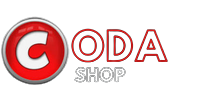User-generated content (UGC) has become a fundamental aspect of modern marketing strategies. Brands that effectively curate and manage UGC can benefit from increased engagement, brand loyalty, and trust among their audience. In this article, we’ll explore essential tools that can help marketers master the art of curating and managing user-generated content.
Why UGC Tools Matter
UGC tools play a crucial role in simplifying the process of collecting, organizing, and utilizing user-generated content. These tools offer a range of features such as content aggregation, moderation, and analytics, which are essential for maximizing the impact of UGC on marketing campaigns.
1. Yotpo
Yotpo is a popular UGC platform that allows brands to collect and showcase customer reviews, photos, and videos. It offers features for content moderation, social curation, and performance tracking, making it an essential tool for managing and leveraging UGC effectively.
2. TINT
TINT is a UGC platform that enables brands to aggregate and display user-generated content from social media on their website or other digital properties. It offers features for moderation, customization, and analytics, making it easy for marketers to curate and showcase UGC.
3. CrowdRiff
CrowdRiff specializes in visual UGC, helping brands find and use user-generated photos and videos in their marketing campaigns. It offers features for rights management, curation, and performance tracking, making it a valuable tool for managing visual UGC.
4. Olapic
Olapic is another UGC platform focused on visual content. It allows brands to collect and display user-generated photos and videos, with features for measuring the impact of UGC on brand engagement and sales.
5. Stackla
Stackla helps brands find, curate, and display user-generated content across multiple channels. It offers tools for content moderation, rights management, and performance tracking, making it easy for marketers to manage UGC effectively.
6. Curalate
Curalate specializes in visual UGC, helping brands discover and use user-generated photos and videos in their marketing campaigns. It offers features for content curation, rights management, and performance tracking, making it a valuable tool for managing visual UGC.
7. Pixlee
Pixlee is a UGC platform that helps brands collect, curate, and display user-generated content from social media. It offers features for content moderation, customization, and performance tracking, making it easy for marketers to curate and showcase UGC.
8. Taggbox
Taggbox enables brands to aggregate and display user-generated content from social media on their website or other digital properties. It offers features for content moderation, customization, and performance tracking, making it a valuable tool for managing UGC.
9. SocialBakers
SocialBakers helps brands analyze and optimize their social media performance. It offers features for social media monitoring, analytics, and reporting, making it easy for marketers to track the impact of UGC on their marketing campaigns.
10. Woobox
Woobox allows brands to run user-generated content contests and promotions. It offers features for contest management, entry moderation, and performance tracking, making it a valuable tool for managing UGC and incentivizing user participation.
Conclusion
UGC is a powerful tool for marketers, but effectively curating and managing user-generated content requires the right tools. The tools mentioned above are essential for any marketer looking to master the art of UGC and leverage it effectively in their marketing campaigns. By using these tools, marketers can maximize the impact of UGC and drive engagement, brand loyalty, and trust among their audience.

